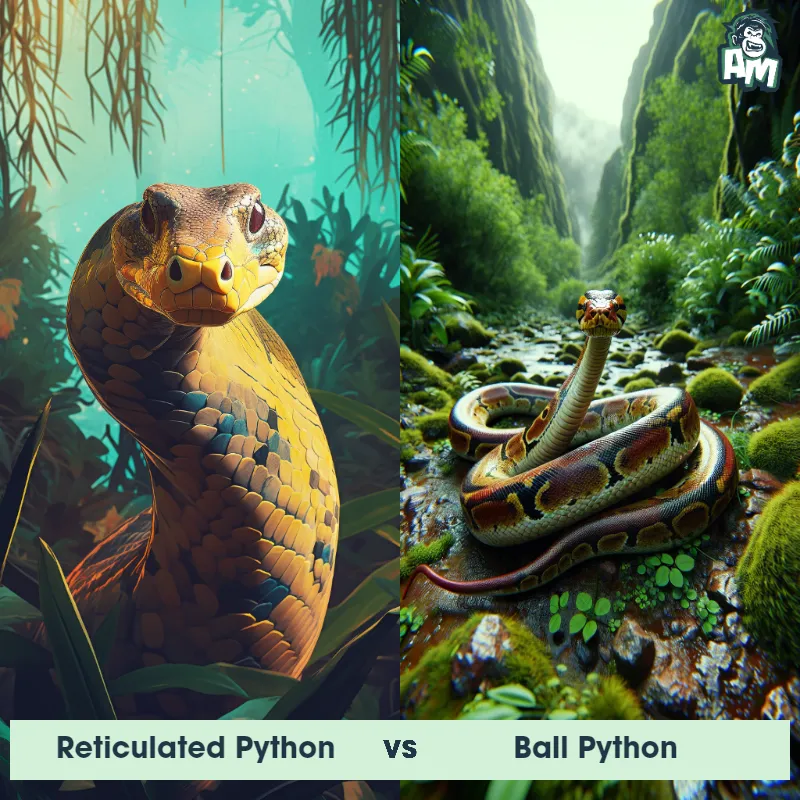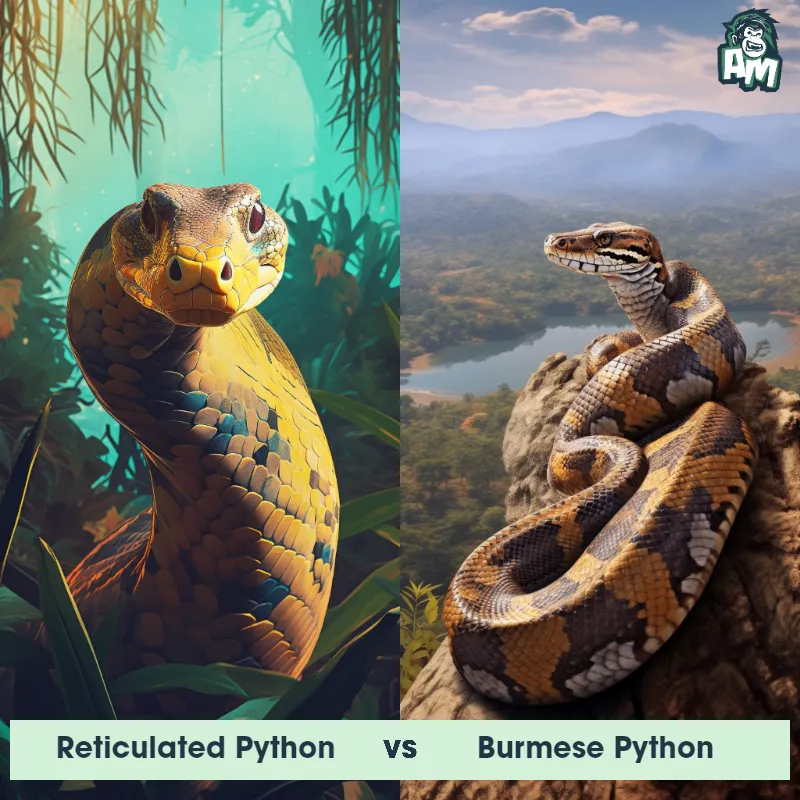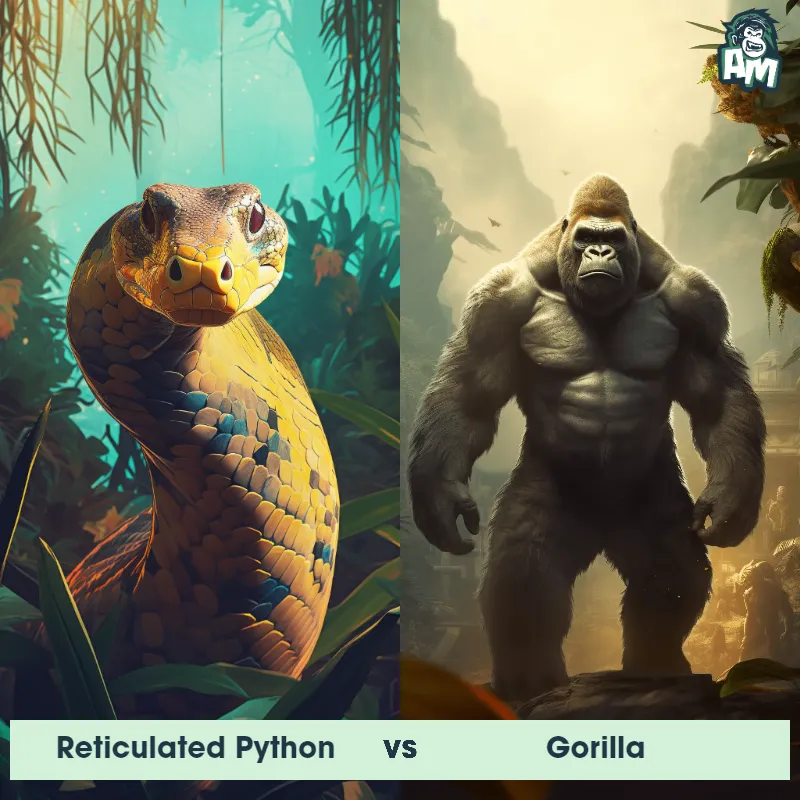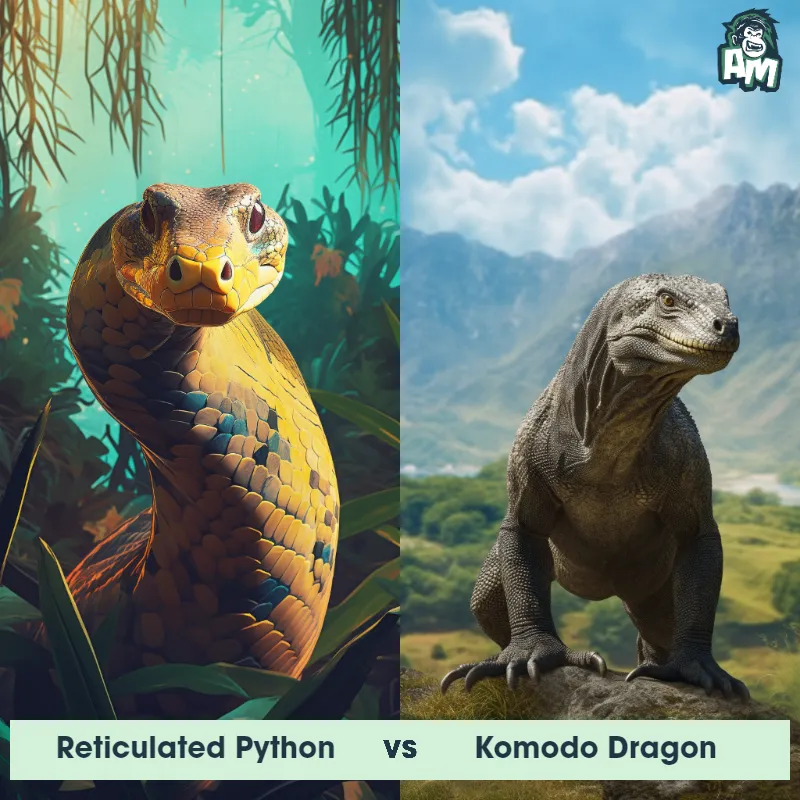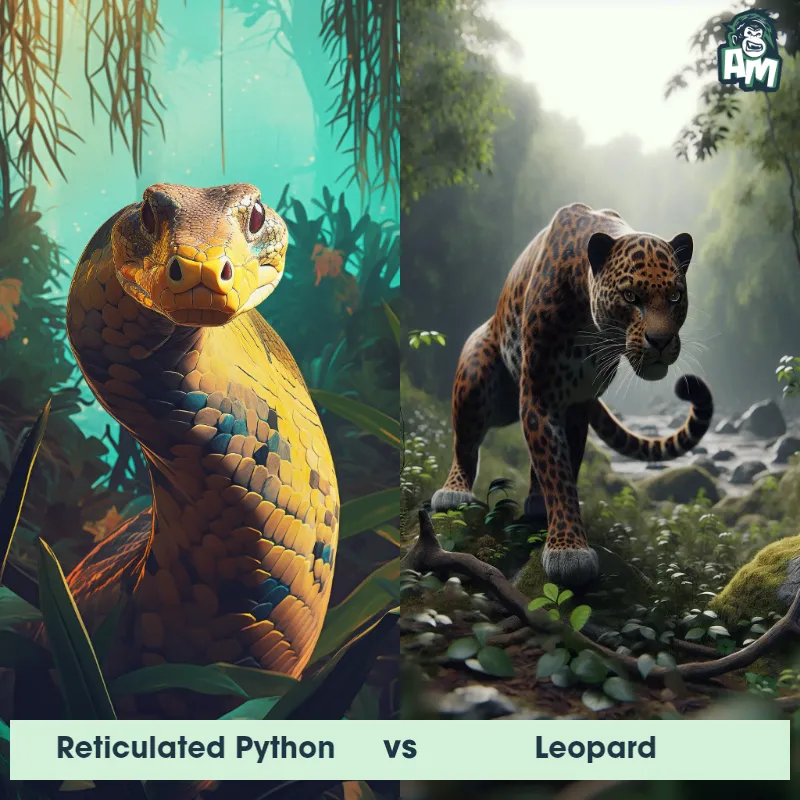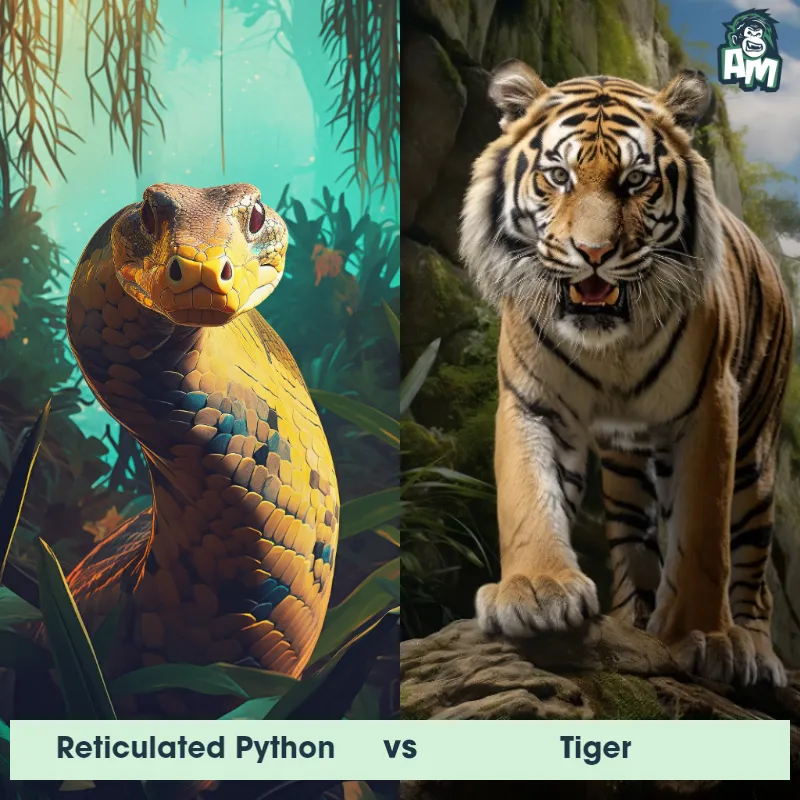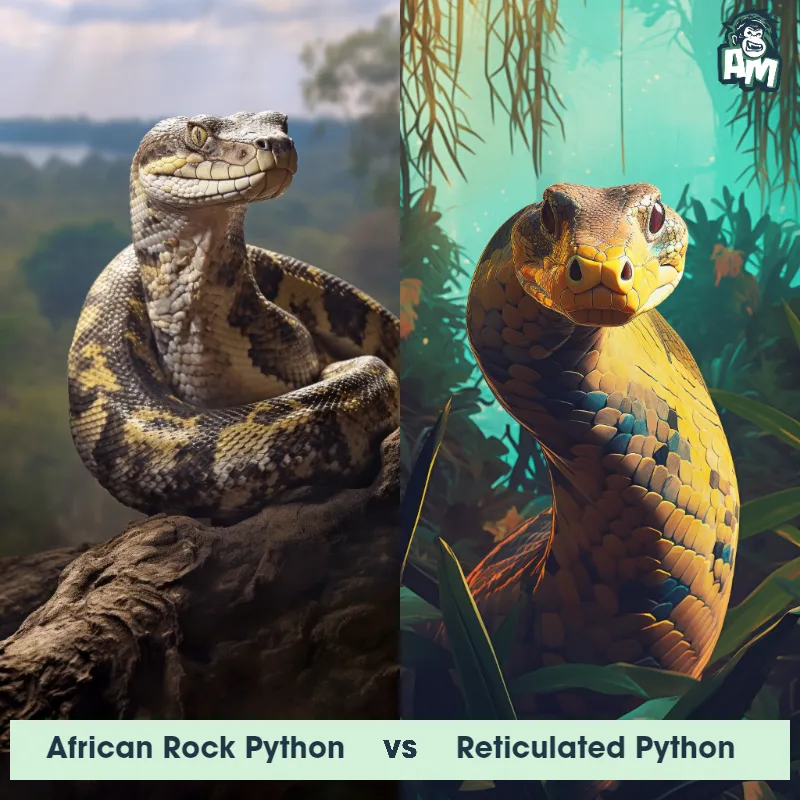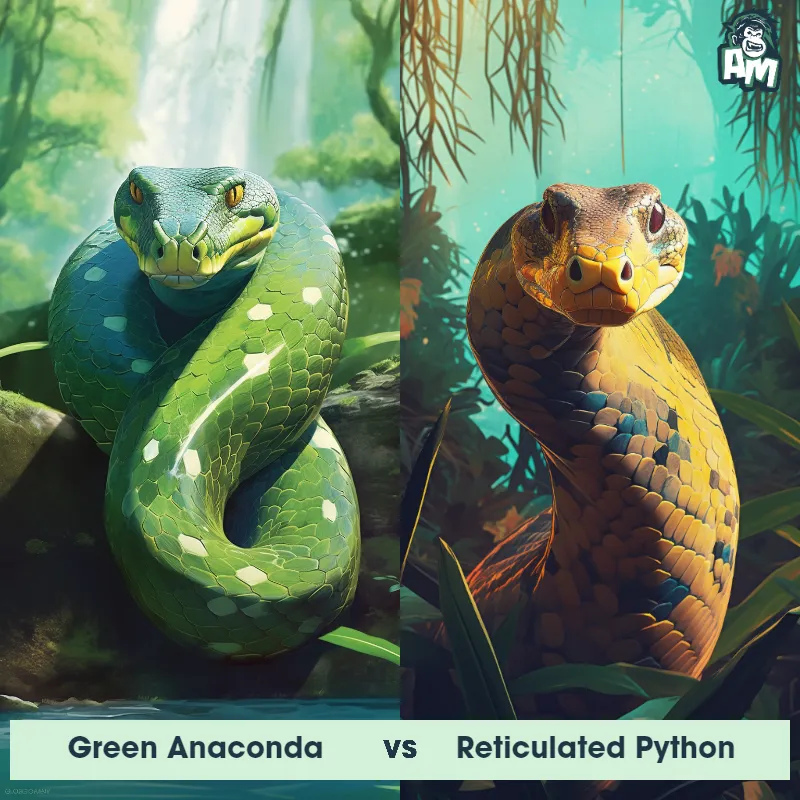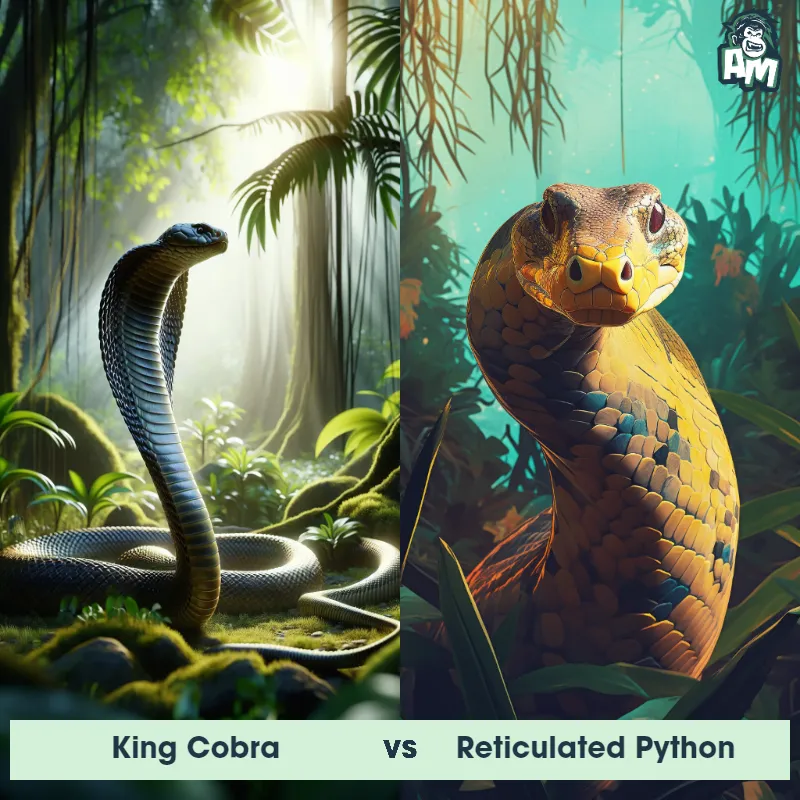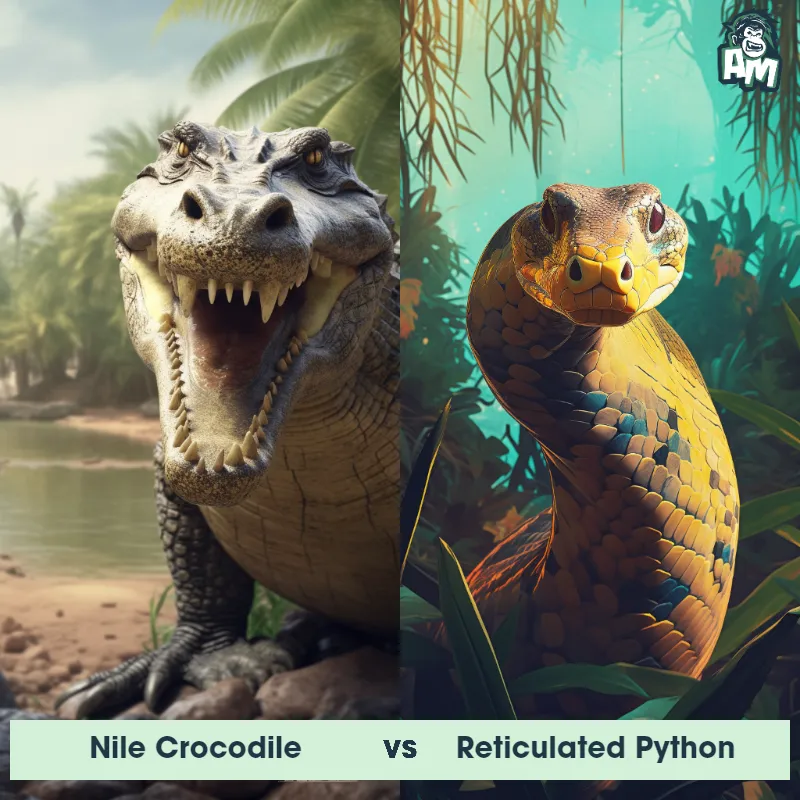The Reticulated Python
The Reticulated Python, also known as Python reticulatus, is one of the largest snake species in the world, measuring up to 30 feet in length and weighing around 350 pounds. It is characterized by its beautiful pattern of interlocking scales in shades of brown, black, and yellow. This snake has a slender, elongated body, a triangular-shaped head, and powerful jaws with sharp, backward-facing teeth. The Reticulated Python is a non-venomous constrictor that hunts by coiling around its prey and suffocating them before swallowing them whole.
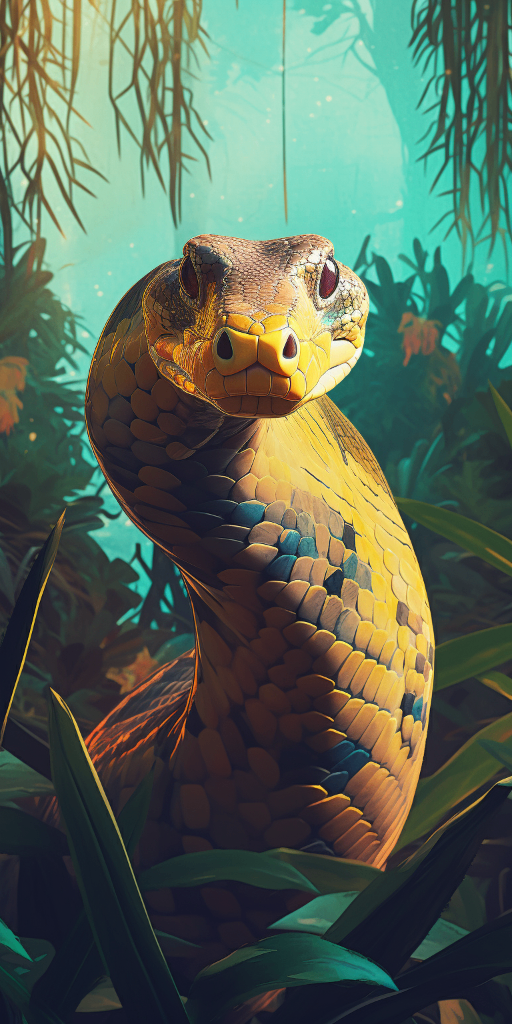
| Reticulated Python | |
|---|---|
| Size | Up to 30 feet (9.1 meters) |
| Weight | Up to 350 pounds (159 kilograms) |
| Speed | Speed: 5 mph (8 km/hr) |
| Key Strength | Constriction |
| Biggest Weakness | Vulnerable to attacks from multiple predators |
| Scientific Name | Python reticulatus |
| Family | Pythonidae |
| Habitat | Forests, grasslands, and swamps |
| Geography | Southeast Asia |
| Diet | Birds, mammals, and reptiles |
| Lifespan | 20 years - 30 years |

The Reticulated Python
The Reticulated Python, also known as Python reticulatus, is one of the largest snake species in the world, measuring up to 30 feet in length and weighing around 350 pounds. It is characterized by its beautiful pattern of interlocking scales in shades of brown, black, and yellow. This snake has a slender, elongated body, a triangular-shaped head, and powerful jaws with sharp, backward-facing teeth. The Reticulated Python is a non-venomous constrictor that hunts by coiling around its prey and suffocating them before swallowing them whole.
Fun Fact: The Reticulated Python is an excellent swimmer and is often found near water, as it is known to dwell in marshes, river valleys, and rainforests.
| Reticulated Python | |
|---|---|
| Size | Up to 30 feet (9.1 meters) |
| Weight | Up to 350 pounds (159 kilograms) |
| Speed | Speed: 5 mph (8 km/hr) |
| Key Strength | Constriction |
| Biggest Weakness | Vulnerable to attacks from multiple predators |
| Scientific Name | Python reticulatus |
| Family | Pythonidae |
| Habitat | Forests, grasslands, and swamps |
| Geography | Southeast Asia |
| Diet | Birds, mammals, and reptiles |
| Lifespan | 20 years - 30 years |
Match Highlights
Reticulated Python Matchups
We use AI to simulate matchups between the Reticulated Python and other animals. Our simulation considers size, strength, and natural predatory behaviors to determine the most likely outcome.

Can't find the Matchup you want?
Create Your Own MatchupReticulated Python: Diet, Predators, Aggression, and Defensive Behaviors
What do Reticulated Pythons eat?
Reticulated Pythons typically prey on mammals, birds, and occasionally reptiles. Their diet consists mainly of rodents, such as rats and mice, but they are also known to consume larger animals like monkeys, pigs, and deer. These massive snakes are ambush predators, using their excellent camouflage and stealth to surprise and overpower their prey.
Do Reticulated Pythons have any predators?
As apex predators themselves, adult Reticulated Pythons do not have many natural predators. However, younger and smaller pythons may fall victim to larger predators such as birds of prey, big cats, and other snakes. Human activities such as habitat destruction and poaching also pose a significant threat to their survival.
Are Reticulated Pythons aggressive?
Reticulated Pythons are known to be more aggressive compared to other types of snakes. When threatened or cornered, they may strike or bite as a defensive response. However, their first line of defense is usually to escape or hide rather than engage in confrontation. Proper handling and respect for their space can help prevent aggressive behavior in captivity.
Do Reticulated Pythons fight?
In the wild, Reticulated Pythons are solitary animals and do not actively seek out fights with other snakes. However, territorial disputes or competition for resources may lead to confrontations between individuals. These conflicts usually involve intimidation displays, such as body inflation and hissing, rather than physical combat. The loser typically retreats to avoid injury.
How do Reticulated Pythons defend themselves?
Reticulated Pythons have several defense mechanisms to protect themselves from threats. When feeling threatened, they may coil their bodies tightly, hiss loudly, and strike as a warning sign. Additionally, their cryptic coloration and pattern help them blend into their surroundings, making them less visible to potential predators. If all else fails, they rely on their sheer size and strength to overpower their adversaries.
What is the biggest weakness of Reticulated Pythons in a fight?
Despite their impressive size and power, Reticulated Pythons have a vulnerability in the form of their relatively slow movement and agility. While they are capable of delivering a powerful constricting bite, their lack of speed makes them susceptible to agile predators or adversaries that can evade their attack. Additionally, their massive body size can also be a hindrance in confined spaces or during quick maneuvers.
Fun Fact: Reticulated Pythons have a unique way of climbing trees, as they can use their sharp claws on their belly scales to grip onto branches and haul themselves up with surprising agility despite their massive size.
Fun Fact: Unlike most snakes that lay eggs, the Reticulated Python is oviparous, meaning it gives birth to live young. The female python coils around her eggs, incubating them by shivering to generate heat and keep the eggs warm until they hatch.




